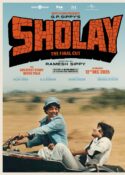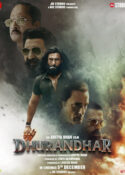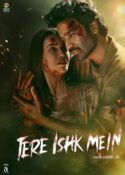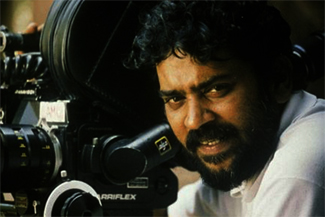 When talking about the great cinematographers of India, one name that has to be at the top is Santosh Sivan. He has won over 13 National Awards, was recently honored with a Padma Shri and also is the first Indian cinematographer to be inducted into the American Society of Cinematographers. Not only does he focus the lens and set the frame in both Indian and English films, he also has sat in the director’s chair to create his own magic. His credits include Dil Se, Asoka, The Terrorist, Before the Rains, Thalapathi, Raavan, Iruvar, Roja, Phir Bhi Dil Hai Hindustani, and more.
When talking about the great cinematographers of India, one name that has to be at the top is Santosh Sivan. He has won over 13 National Awards, was recently honored with a Padma Shri and also is the first Indian cinematographer to be inducted into the American Society of Cinematographers. Not only does he focus the lens and set the frame in both Indian and English films, he also has sat in the director’s chair to create his own magic. His credits include Dil Se, Asoka, The Terrorist, Before the Rains, Thalapathi, Raavan, Iruvar, Roja, Phir Bhi Dil Hai Hindustani, and more.
As part of the London Indian Film Festival on July 11th, Mr. Sivan will be giving a special master class. I was lucky enough to chat with Mr. Sivan about his career, and it was a fascinating conversation covering many different and interesting topics. Enjoy!
Why films and behind the camera as your career?
I always thought I would do this. Growing up I was always inspired by my grandmother. She used to paint and she used to bring illustrative pictures and tell stories behind the mythology. It was one of my first visual educations. They also encouraged me to sketch and paint, my grandmom and my dad. Then my dad took me into photography. I love the idea of creating something. When they teach you art and do creative things, in our place, they will always tell you that 1 + 1 is never 2. It is always what you make of it. You can have 1 + 1 and it can become three, or if you are a farmer and you grow a handful of rice it can become thousands, things like that.
I always wanted to be behind the camera. I always had the dream to do this. I realized that everyone has dreams but I also wanted to have a dream where I could be very happy living in this dream. Otherwise, it becomes you get to a dream and then you don’t want to do that because you have to make your own living. So I loved the idea of enjoying something and at the same time it provides me with a livelihood too.
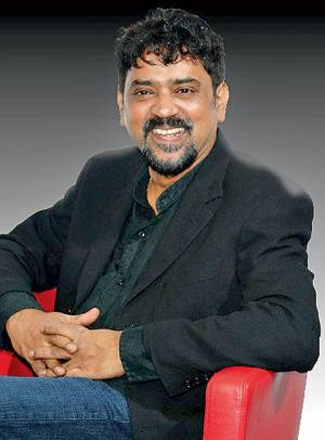 I also liked the idea of traveling because I always thought that was a very good first time education when you travel. So I had a very genuine interest in traveling and I still do that.
I also liked the idea of traveling because I always thought that was a very good first time education when you travel. So I had a very genuine interest in traveling and I still do that.
This may seem a simple question but I imagine it is an in-depth answer. How would you describe what a Cinematographer does?
Actually it is layered because with every film you tend to do a lot of things. Sometimes you have a director who is also interested in the visual storytelling. Sometimes you are also someond who has to mediate with people to come on time so that you can film it on time and you can film it in the right kind of light and space, which you think is appropriate for the scene that has to be told. Then you try to bring in as much as you’ve observed in real life, which you would like to recreate because nature has an abundance of everything – it is just choosing or rather stylizing the reality to an extent that it actually suits what you are trying to do. Then even if you do a song it has its own charm of trying to find the motivation for it. For a song like ‘Chaiyya Chaiyya’ which is a very famous train song with Shah Rukh Khan, the motivation behind it is that with the director and you interacting and going through and trying to find the train and every train view, and finally you have this nostalgic feel about it, maybe for it to be like your first train ride through Tamil Nadu and out of it. So you tend to find motivation to do things like that.
So with different directors it’s different kinds of roles. You are always finding yourself. You also land up with very interesting people, like MF Hussain, who is a painter and then you start learning a lot more about how he sees movies. Like if he suddenly wants scratches at the end of the reel and you wonder why. He always associates scratches with his movies – he does not like anything clean and nice and distilled. So I think people have different kinds of thinking. Then it’s also a learning process because you know everything in the world changes because when my grandmom used to make me paint and sketch she would say ‘this is an original painting’ and she would frame it just to inspire me. Then later on when dad took up photography he told me the negative is the original. Today digital copy is the original. So things will keep on changing, but the image capturing will never change. That is always something that will have to do with your sensibility and the way you are brought up.
Your cultural environment slowly creeps into your work, which makes it different and that’s what’s interesting. Especially as a cinematographer coming from India – I am out of Kerala, your sensibility is a different experience when people from outside see it. So rather than try and imitate Western films and how they do things, try to do your work with the sensibilities and influences that you have learnt, then it becomes interesting to engross an audience.
How do you decide what films you want to be part of?
When I started off it was always an opportunity when someone offered a shoot to you and you would do it. All you wanted to do is make sure you do the work and then get on with and try to find a way out of whatever problems you have. Then you of course want to like the story idea and like the director very much. It could be a new director and you want to be a part of that energy and something new they are doing. Sometimes they are painters, sometimes they are critics. Sometimes you do films that are very big, where you are getting paid for doing more because I also make my own movies. So if I get paid well, then I get to make my small movies which I learnt in school, and explore some other territory. So it keeps you going. So it’s good to shift from one to another so that you actually enjoy working and not do the same kind of thing all the time. Most of the time it would be fair to say that I would like to feel what the story is and maybe the director especially. Because, you know, sometimes you can know and feel a story but when you meet the director you exactly know what he’s try to do and then it becomes interesting. Then you motivate yourself to do something, which surprises you too.
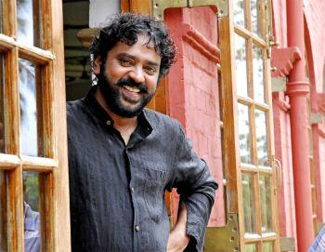 How does the process begin, when you first meet with a director, how do you go about finding the camera’s voice for the film?
How does the process begin, when you first meet with a director, how do you go about finding the camera’s voice for the film?
When you do Indian films, I won’t say Bollywood films, because if you look at Bollywood films you will find that many of the films are inspired by films from the South film industries, but basically it means larger than life kind of a thing. It actually operates on a very interesting level because if you actually see a film that is done by a very big star, the kind of audience it has and the kind of participation that the audience has and how they are involved in the film, is an experience. It is not like you are watching it on TV as video and you are wondering what is it about this film that people are so crazy about. If you see it in the theater with the fan following and the fanfare of a film being released, it is quite an experience – it is almost like a festival, especially at the big theaters.
So what happens interestingly in our films is even the way the screenplay goes you know exactly when the audience is going to be surprised and when people will clap and things like that. It is like a very cleverly orchestrated type of movie where people think they know but they are still surprised. Then as a cinematographer, you just want to give them a new perspective and a new angle to it and try to make the experience more interesting and more surprising and maybe more believable. It has to be believable and when it has to be fantastical and magical, especially for songs, then you switch and go over that way. So it is a very interesting holiday kind of film making, if you know what I mean. Then maybe after that you can go and make a very serious film where perhaps you try something new and maybe you try to make the whole film be one film. These different kinds of films offer different challenges. The whole fun and swing of working is very good. Sometimes I think it is interesting because you can do so many different films, there are big films, there are small films or realistic films that sometime give you a very good opportunity to go back and forth and do something interesting.
What do you think has been your greatest film as a cinematographer?
I think that is yet to come (Laughs!) Actually I have done quite a few films and I have won several awards including National awards for films. I can’t really choose but most of them have been very challenging and very interesting. It is really nice when people still talk about it. I like that.
Was there ever a film that went exactly as planned?
Almost all the time it has always gone wrong. (Laughs) I don’t think there has been any film that has gone exactly the way that you thought it would. You are actually quite happy if you can get 40% of what you thought you could get. Sometimes, I will also say, things have gone better than what you thought. That is only because your whole idea of filming is very organic and you are relieved to pounce on some kind of magic that happens. Because I feel that sometimes the most beautiful things in life are captured when there is a transition going on. A transition like there is a monsoon going on and suddenly there is a silver streak of sunlight coming in. That is very, very momentary but it is beautiful. Or maybe night giving way to day or day giving way to night – these times are all very momentary but they are very beautiful. Most of the time they are there but they are very transient and they are very beautiful. I try my best to try and capture them in a way that shows them off, when it is possible.
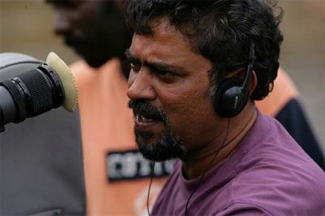 Was there ever a shot that a director or you wanted to do that was just impossible?
Was there ever a shot that a director or you wanted to do that was just impossible?
No actually because I think the whole fun of cinematography is trying to tell everyone that everything is possible. (Laughs) The fun of it is if you take it as there is always a challenge and there is always something that you can find, which you have not done before. That is what makes it really interesting. When people tell you things are impossible, then you say okay here is something that I have not done before so maybe I should try and do something interesting.
I have shot a film for the director Mani Ratnam, which is called Iruvar, (Duo). To me, I personally feel it is a tribute to Subrata Mitra a great cameraman. Despite it being Aishwarya Rai’s first Tamil film and starring Mohanlal and a big star cast, the film has an interesting way of telling the story. It had a very documentary approach so there were very lengthy single takes and most of the time it was with 10,000 people in the frame. And you want to shoot it in these transitions lights when the light is just going and you want to take these shots. I think sometimes the director also revels in the fact where he wants these situations where it has to happen like that. Until we have found it, everyone is focused and then there is something very beautiful that happens.
That film is one of my favorites actually because all the things you have done and also the way you are telling it is in the old way. Even the aspect ratio has changed so we used the old aspect ratio because it has the period flavor to it. So he decided to change the film format as well. It actually has this documentary feeling to it and the camera is actually going everywhere. It is all single shot so you know everything is real. You don’t take from here and then cut to something else and then it pans to show what is happening. I got a lot of beautiful choreography of art direction and acting and the camera movements and the script. The whole film is one side there is politics and on the other side is the film industry. It is black and white and color too. It is a film that has black and white shots because it is about the film industry back then and they shot in black and white so it has scenes of them shooting and that would be in black and white. So it went from one world to the film world, like 50 years ago. If you haven’t seen it it is a very interesting film, I think you will like it!
You have shot in so many different film industries in India…
The visual language is universal so it doesn’t matter in which language I am working. In fact even Aśoka is a film that I always wanted to do. You know, when I was kid, I think in the 6th standard, my teacher used to tell me the Ashoka story in the classroom. It was just after lunch and all of us were sleepy. And my teacher used to say, “You don’t like it?” And all of us used to say, “No we don’t like it because he stopped fighting.” Then the teacher got very dejected and he sat down in his chair and he asked, “How many people of you throw stones at dogs?” And almost all of us put our hands up. Then he said, “Okay Santosh one day when you stop throwing stones at dogs I think you should remember Ashoka.” You know most of the films I have directed are from my school days. The children’s movies I have done are all something I have studied, most of the films I have done have some connection with me. Because when you say original it means something with an origin, so I would rather have the origin be something rare and something that was from me not from something else.
Before the Rains is another film I shot, an English film that I directed also. It was shot in Kerala. It stars Linus Roache and Jennifer Ehle, then there are Nandita Das and Rahul Bose. It is actually a story which is very dear to me. It is also a very interesting piece because it was a film from where I come from. I always had the idea of making a film where a road is built, it is a clash of two worlds. Similarly when a foreigner falls in love with an Indian girl, it is a clash of culture and then things go wrong. You would like it, I think.
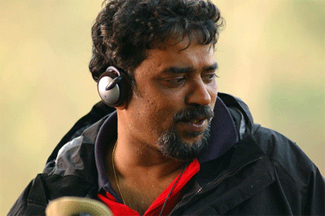 Then there is also The Terrorist, which John Malkovich presented in America. Ayesha Dharker, the heroine in that went on to star in Star Wars and Bollywood Dreams. It was a very well received film.
Then there is also The Terrorist, which John Malkovich presented in America. Ayesha Dharker, the heroine in that went on to star in Star Wars and Bollywood Dreams. It was a very well received film.
So Bride and Prejudice…
That is a fun film. Gurinder Chadha is basically a very fun loving and very beautiful person. She is one of the few people who has a very Western outlook but understands everything that is Indian, which is why she made Bend It Like Beckham and others. I like that energy and the way she tries to actually bring both worlds into something. It is quite interesting because only someone with a real love for both sides can actually attempt something like that. I like that and it was the way I shot that film.
How has filmmaking changed from when you first started?
Filmmaking has changed quite a bit and actually the proposals of it have kept on changing too. Narrations used to be different but now with digital, when they come to something fantastical they say ‘oh that will be CG’. Because before it used to have a magic of the fact that if you want to see a movie you have to go to the theater to see the star. You don’t have to do that anymore. You just turn on the TV and they are there. But you know, I would say it is the group experience that makes it very interesting. In a place like India this is a very big form of entertainment. Everyone goes together and you get massive crowds. The lights go out, it becomes a black screen and then it begins and they all enter the same world and then they go out. The experience of that is the same.
The making of, of course, has changed and now it has become much more organized and you know people are paid correctly and well. It is more responsible now. I would say in working ways things have definitely improved. Actors, someone like Shah Rukh Khan, they have gotten into and are very keen that along with films they should also improve the infrastructure. So they have been doing that.
Also before it was like the studio system where people would be continuously doing one cinema and not doing different films and this happens nowadays, which is great. I like that.
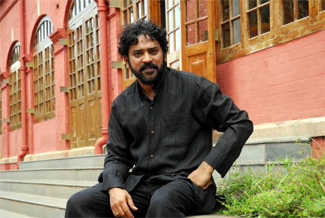 Thoughts on Indian cinema today?
Thoughts on Indian cinema today?
My thoughts…I think sometimes when you reflect on it, Indian cinema as such sounds like a very Western concept. I would say that in India we always have had musical traditions and there is always music. Even when you are at prayer you have music, when you go to a wedding you expect the music, so music is always part of our culture. We have puppet shows and cultural shows. Even before cinema came in, there used to be this whole theater and all these dance forms which always had a component of music. And the music has also, very nicely, gotten into our cinema. For us it is very, very important and it is just a part of it.
The good thing about what I see today that is interesting is the quality of decorative art, be it Indian music or the film. Hollywood really couldn’t break into it. Indian movies have their own audience and their own kind of heroes and so it still has that individuality of being very Indian film. There are niche films, but the fact is because of this thing there is something that is very Indian and that is what makes them special. And money can’t influence or change that. I think it is important to have a little bit of modernity but have more of our culture and sensibilities, which will not and should not change I think. Today, India’s population is very interesting because you have a very properly, very educated person who has the computers and the latest software, who will have the same interest in films and still do his poojas and break the coconut and all of that. That is what makes it interesting. As you travel everywhere you realize that every country and every state has and should have their own flavor of the land. That just makes the whole world so exciting.
Looking back over your career from even when you were drawing with your grandmother and painting until now, what would you say about it? And did you imagine you would be where you are today?
You know, even when you win so many awardsm – and recently you know I got the Padma Shri, which is the highest civilian award, but the fact I feel, is that every time you are being given an honor or award my only thing in life has been whenever something like that happens I would take that as my starting point. I never thought of anything as my finishing point. So everything is a start. So I am the same, I have not changed. You can’t think of anything as a finishing point, everything is a starting point. Time moves on and you just keep doing what you are doing. And think of every new thing or project, be it writing or filming, as a start.
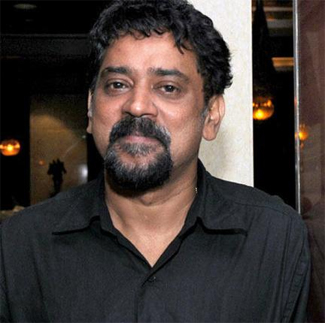 You will be giving a master class at the London Indian Film Festival.
You will be giving a master class at the London Indian Film Festival.
I think it will just be about my life, my influences, my experiences. A lot like what I am talking with you about today. (Laughs) Whatever I have to tell comes in the form of stories of my life and personal experiences. I feel it is the stories that bring home the point of what you have learned. It is all the people in your life and all the reasons for the things you have done…those stories. It will be about that. I don’t think it will be about technique. I believe that photography is all in the mind. A photographer once said the best camera is the camera you have in your hand. It is a beautiful saying if you think about it. You just do what you have to with what you have.
I also will talk about being a part of the American Society of Cinematographers and some of the stories I have told as talks there. I think that will be something that will be interesting to all. It will be about films, photography and life. I think it will be interesting.
I also like the fact that this is the British Film Institute and that it is happening there. I actually have shot there. I think the British Film Institute is a very interesting stage for that kind of a thing because for me, Stanley Kubrick and people like that are always people I have looked up to, and I love that fact that it is in that kind of place. It is always a center stage kind of a thing.
I work quite a bit in London and for me London is like a second home.
What are you working on now?
I am in the middle of shooting a very big film right now with the big star Suriya called Anjaan. It is directed by N. Lingusamy. I will finish it by August and then after that I am trying to make an English film. It is called The Lighting Artist.
It was such a pleasure to talk with Mr. Sivan and I thank him for his time! Stay tuned we will have full report of his master class at LIFF!

